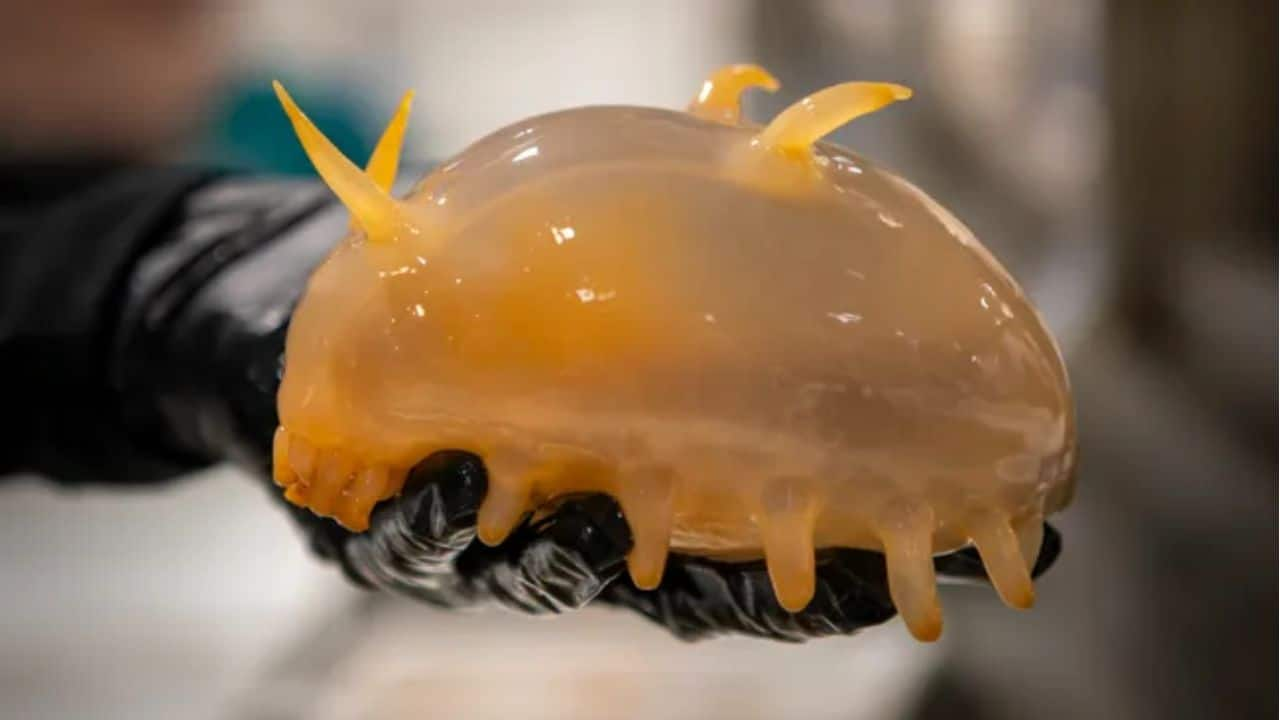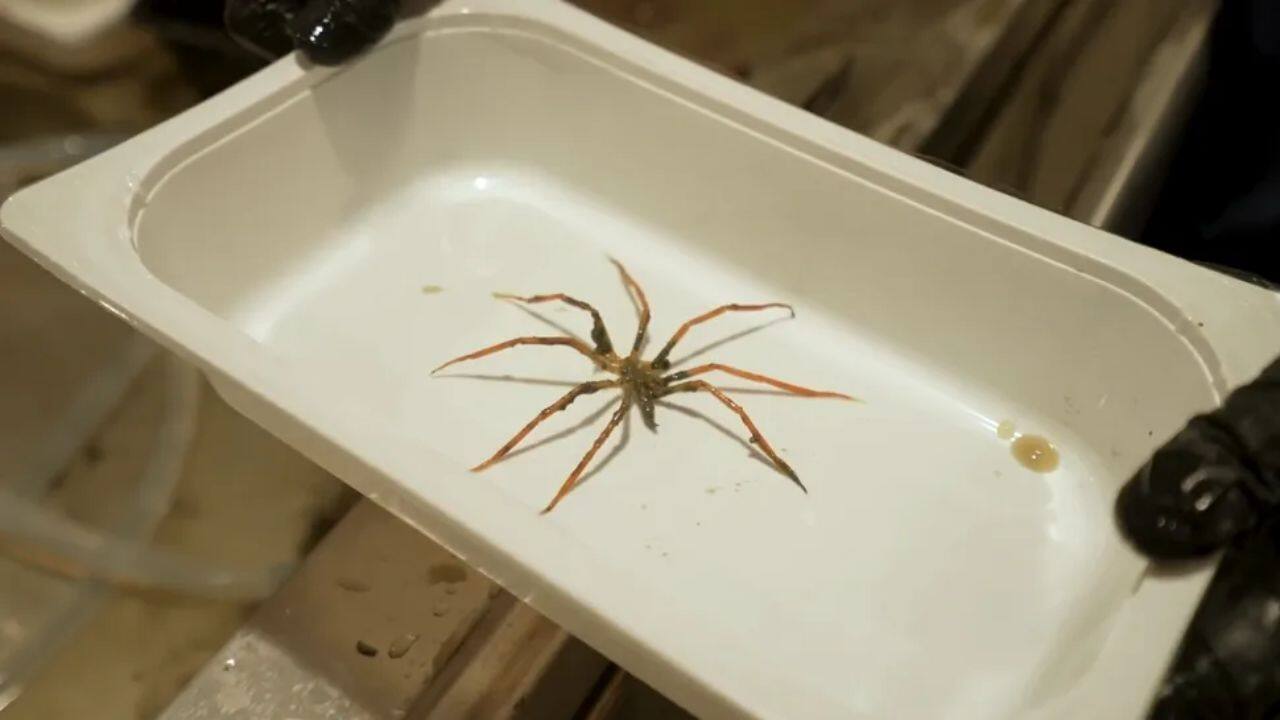



It’s not every day that you meet a “sea pig” or a flying snail. But aboard an Australian ship near Antarctica, scientists are doing just that.
Aboard the RSV Nuyina, a team of Australian researchers is exploring the Southern Ocean. Their mission is to study the retreating Denman Glacier, but they've also stumbled upon some truly bizarre ocean life.
Alien-Like Creatures From the DeepScientists have collected unusual creatures from the ocean floor. These include pink sea pigs, giant sea spiders, dinner plate-sized sea stars, and sea butterflies. Many of these were found during a 60-day voyage on the RSV Nuyina.
The sea pig, a soft-bodied sea cucumber, caught special attention. It looks like a pig with stumpy legs and lives deep underwater. They feed on marine snow, the organic matter falling from above.
 Scientists aboard the RSV Nuyina discovered odd orange "sea pigs," a unique type of sea cucumber. (Image: Commonwealth of Australia/AAD)
Scientists aboard the RSV Nuyina discovered odd orange "sea pigs," a unique type of sea cucumber. (Image: Commonwealth of Australia/AAD)Sea spiders, as large as a human hand, were also recovered. These aren't true spiders but belong to a different arthropod group. Their legs are long and thin, and their organs are stuffed inside them. Some can reach up to 51 cm in leg span.
 The sea spiders found by the team measured roughly the size of a human hand. (Image: Commonwealth of Australia/AAD)
The sea spiders found by the team measured roughly the size of a human hand. (Image: Commonwealth of Australia/AAD)Researchers even found a sea butterfly that looked like it was flying underwater. The tiny snail, nicknamed Clio, laid eggs onboard. This allowed scientists to study its early life for the first time.
 Researchers believe several specimens retrieved from the ocean floor may be previously unknown to science. (Image: Commonwealth of Australia/AAD)The Tools Behind the Discovery
Researchers believe several specimens retrieved from the ocean floor may be previously unknown to science. (Image: Commonwealth of Australia/AAD)The Tools Behind the DiscoveryThe team used a “wet well” tank to keep the animals alive. This special tank holds seawater and preserves delicate creatures for close study.
Samples were taken near the edge of Denman Glacier, about 5,000 kilometres south of Australia. This glacier has melted over 5 km between 1996 and 2017.
The scientists measured water temperature, salinity, oxygen, and metal levels at different depths. These details help them learn how ocean heat reaches the glacier’s base.
Why This Research MattersProfessor Jan Strugnell from James Cook University said the mission may uncover new species. The team is hopeful these animals will reveal secrets of marine evolution.
Oceanographer Laura Herraiz Borreguero said watching the sea butterfly lay eggs was exciting. “The team is thrilled to observe it closely,” she said.
Researchers say that the ocean system is changing fast. Studying these changes helps improve climate models and plan better for the future.
“We must keep observing this shifting system,” Borreguero added. “Only then can we adapt wisely and stay prepared.”
Discover the latest Business News, Sensex, and Nifty updates. Obtain Personal Finance insights, tax queries, and expert opinions on Moneycontrol or download the Moneycontrol App to stay updated!
Find the best of Al News in one place, specially curated for you every weekend.
Stay on top of the latest tech trends and biggest startup news.